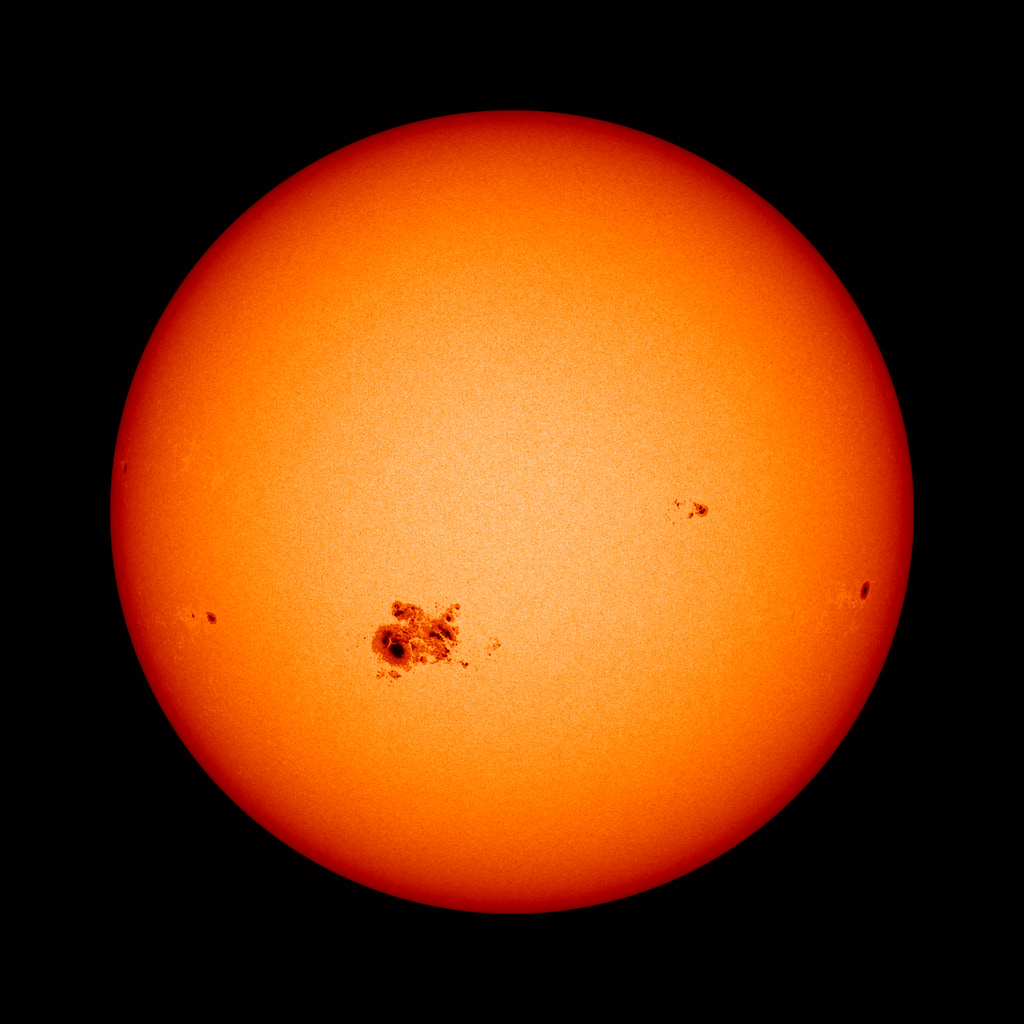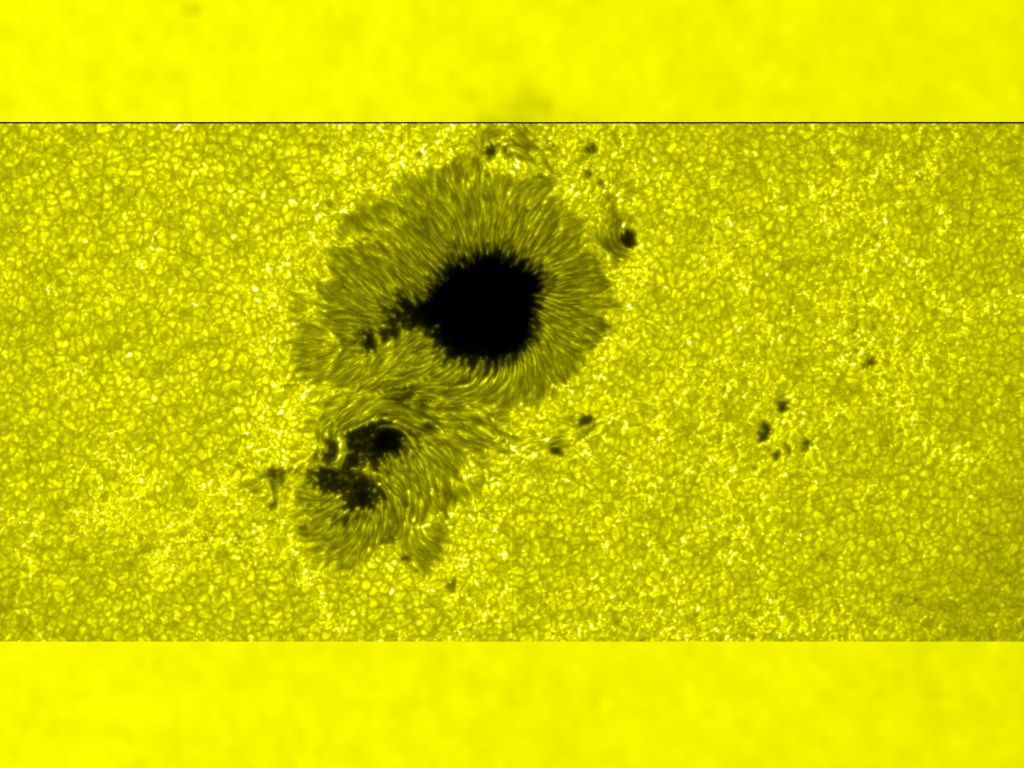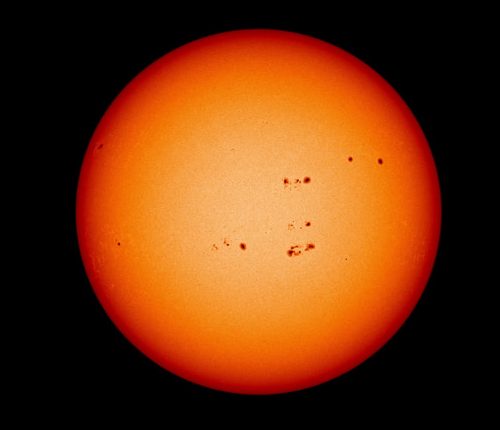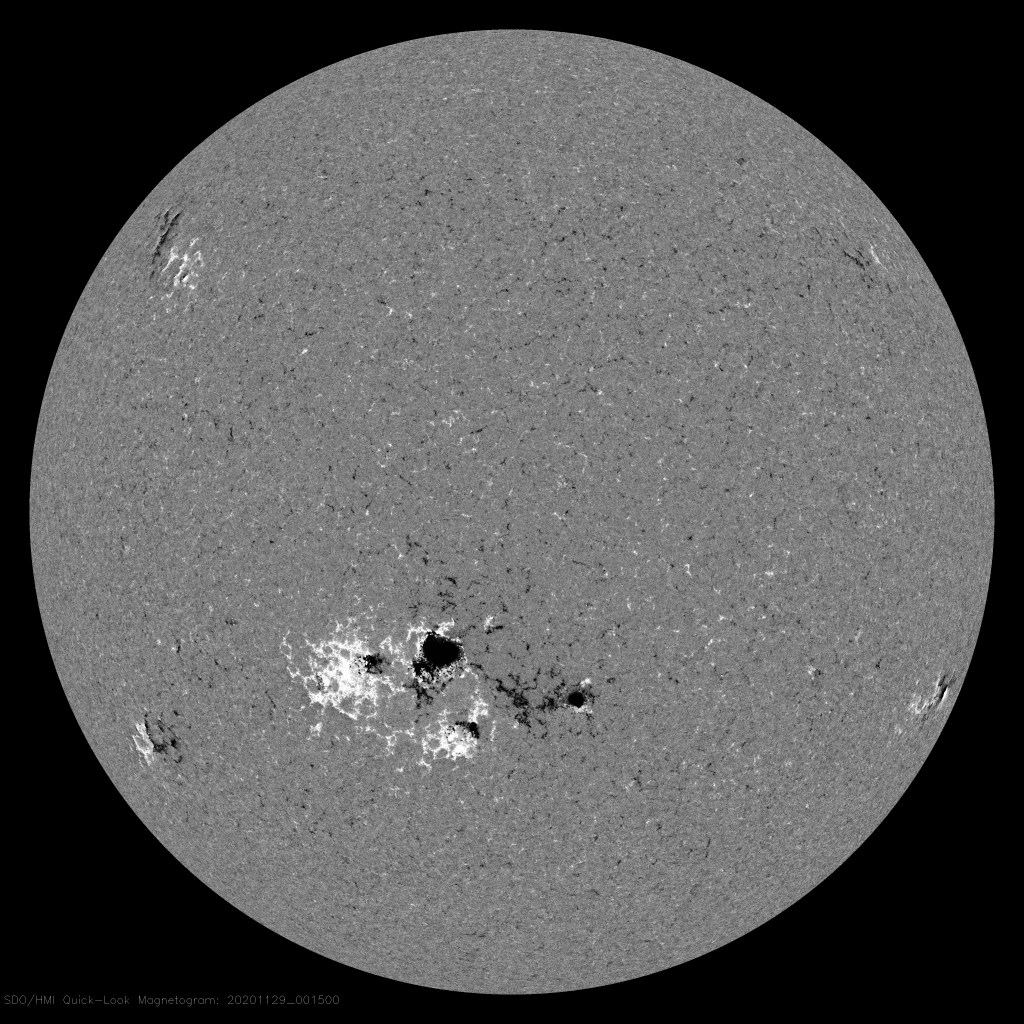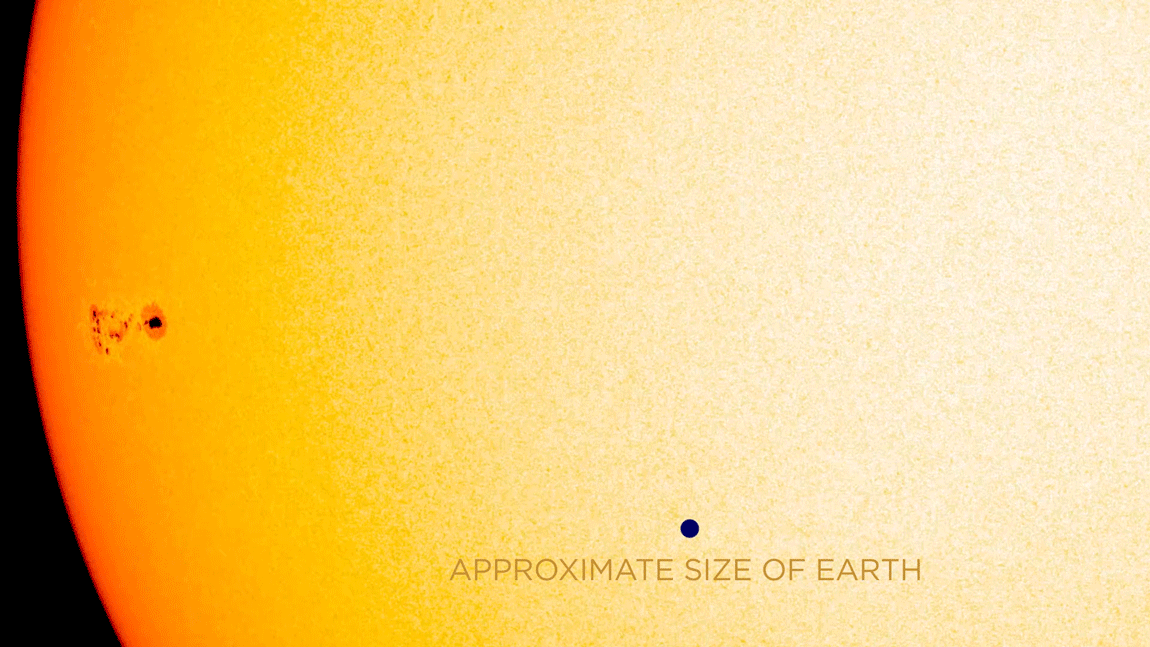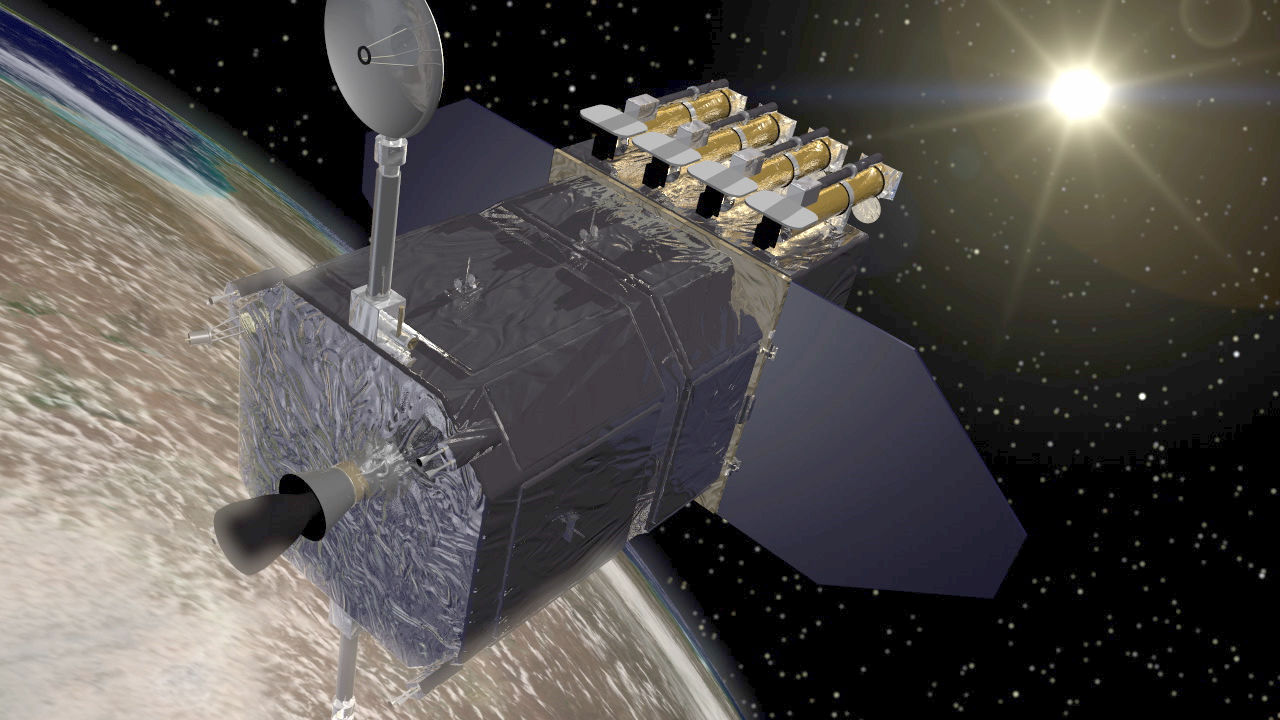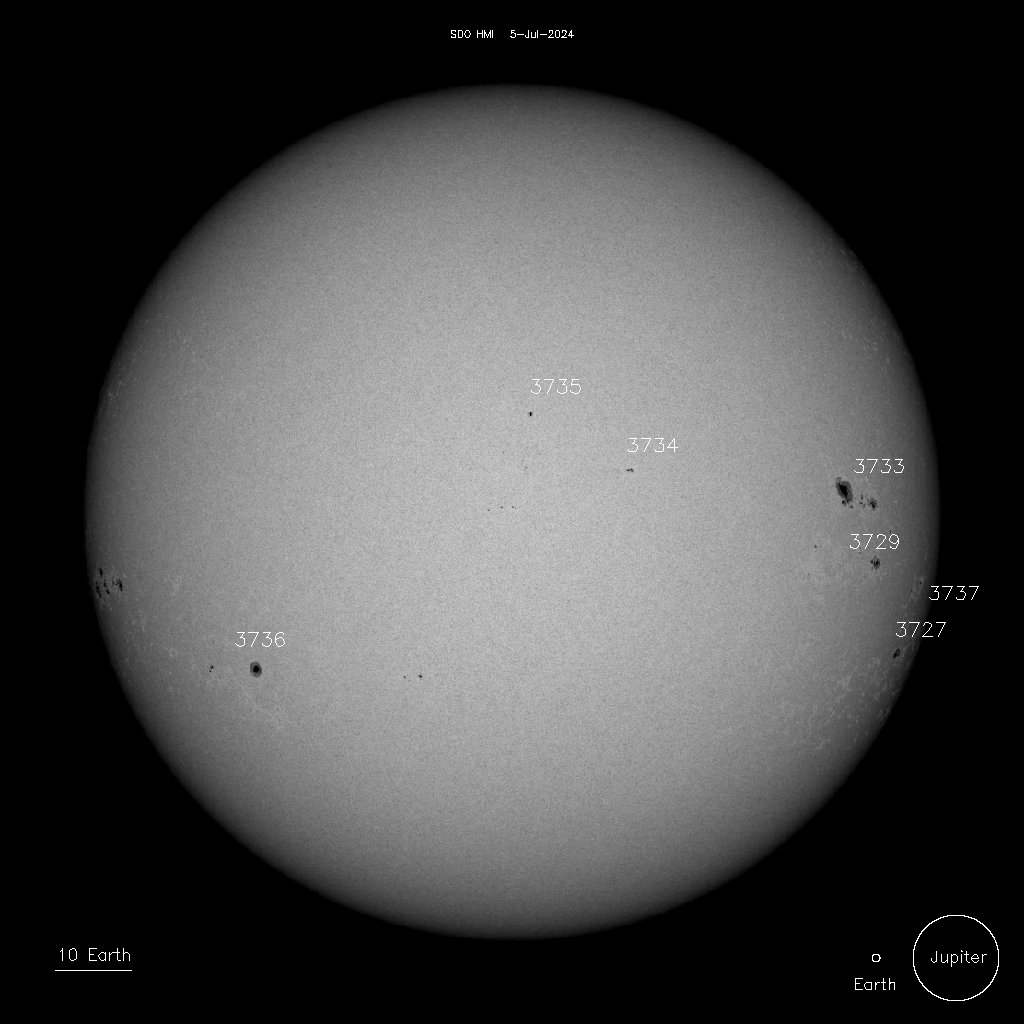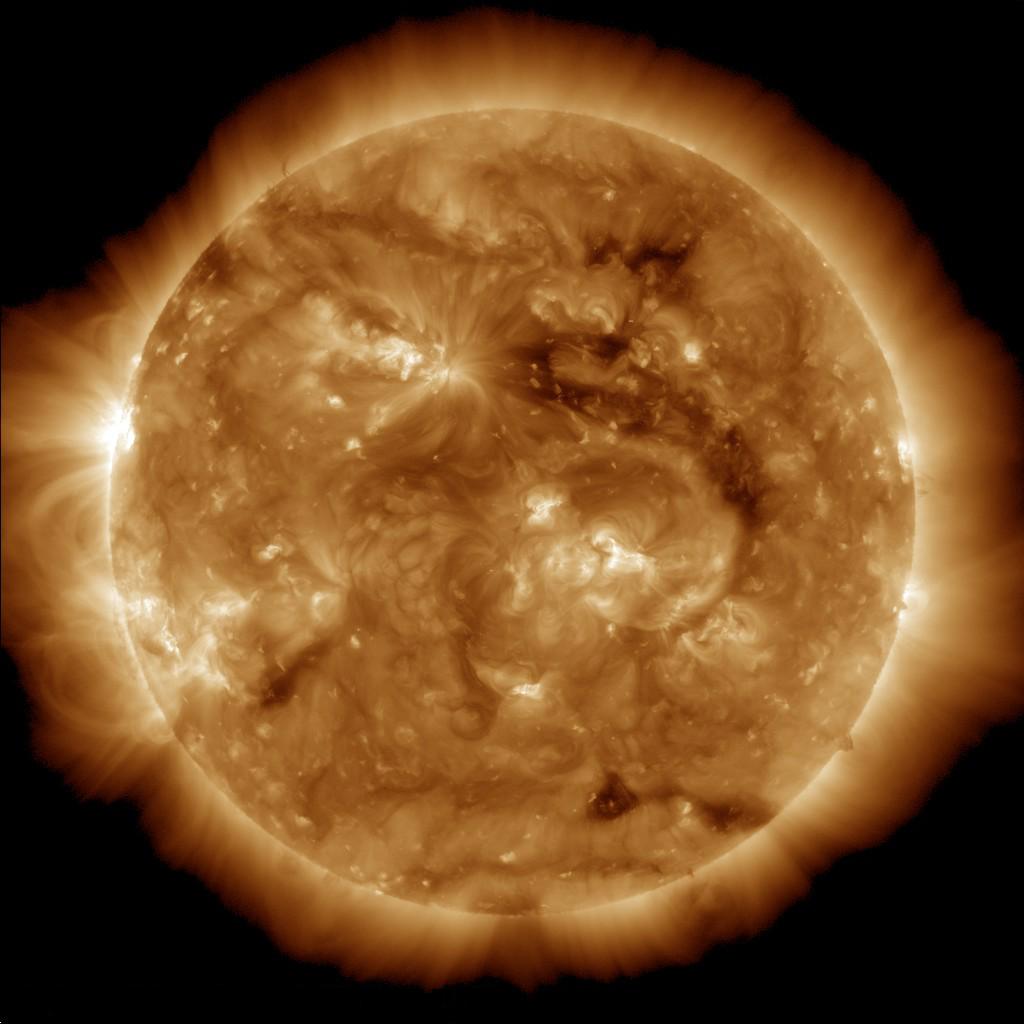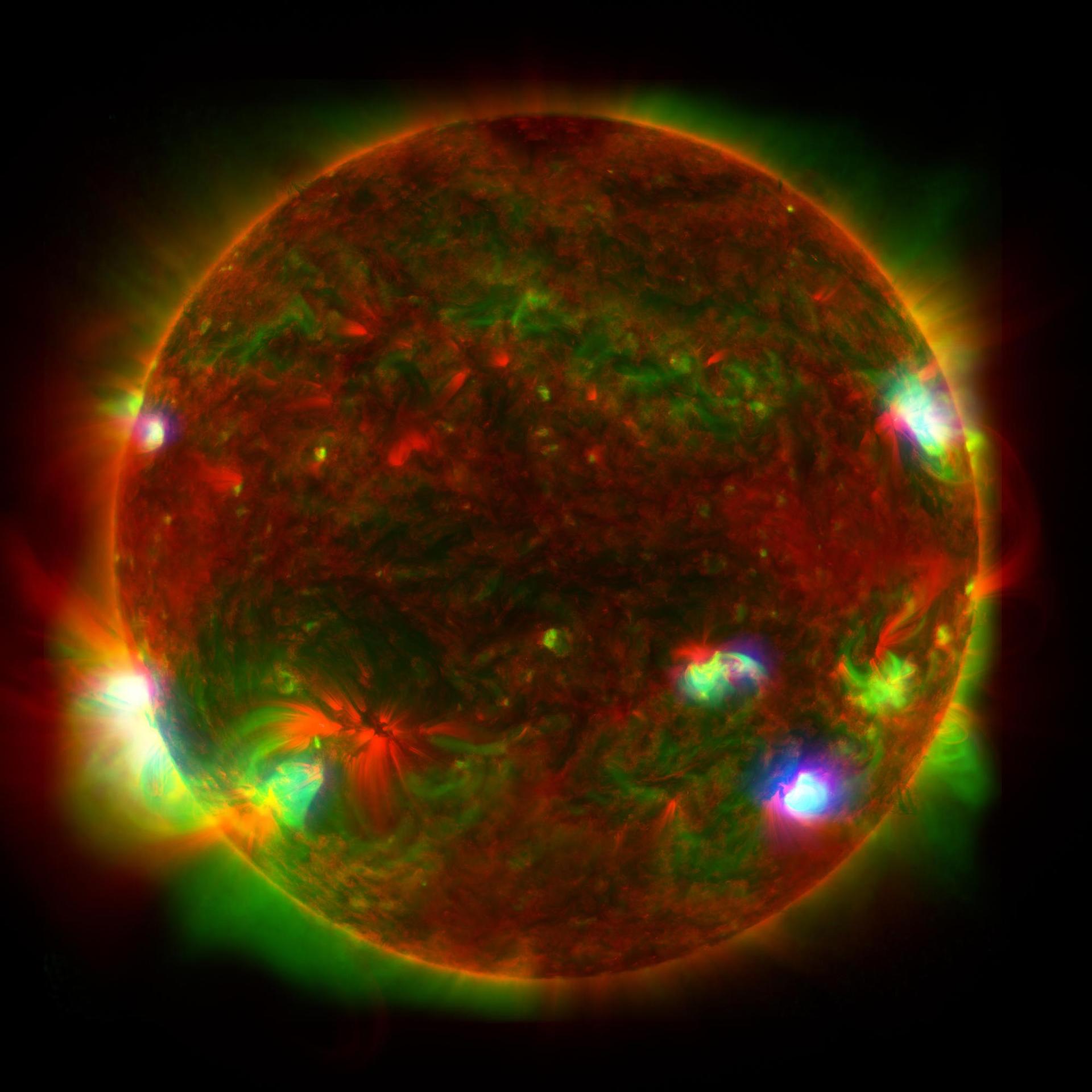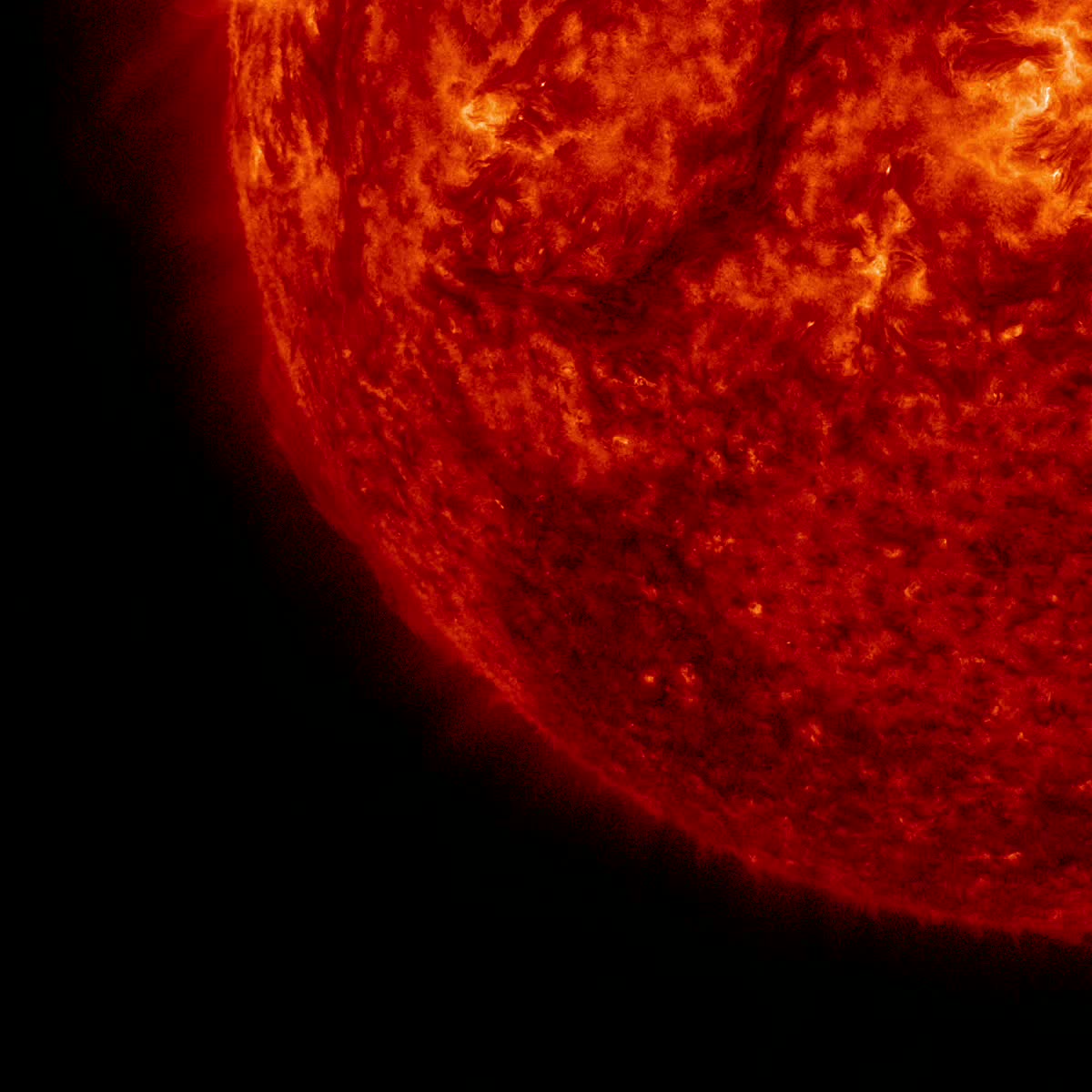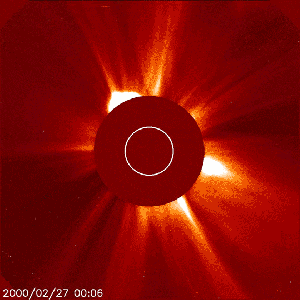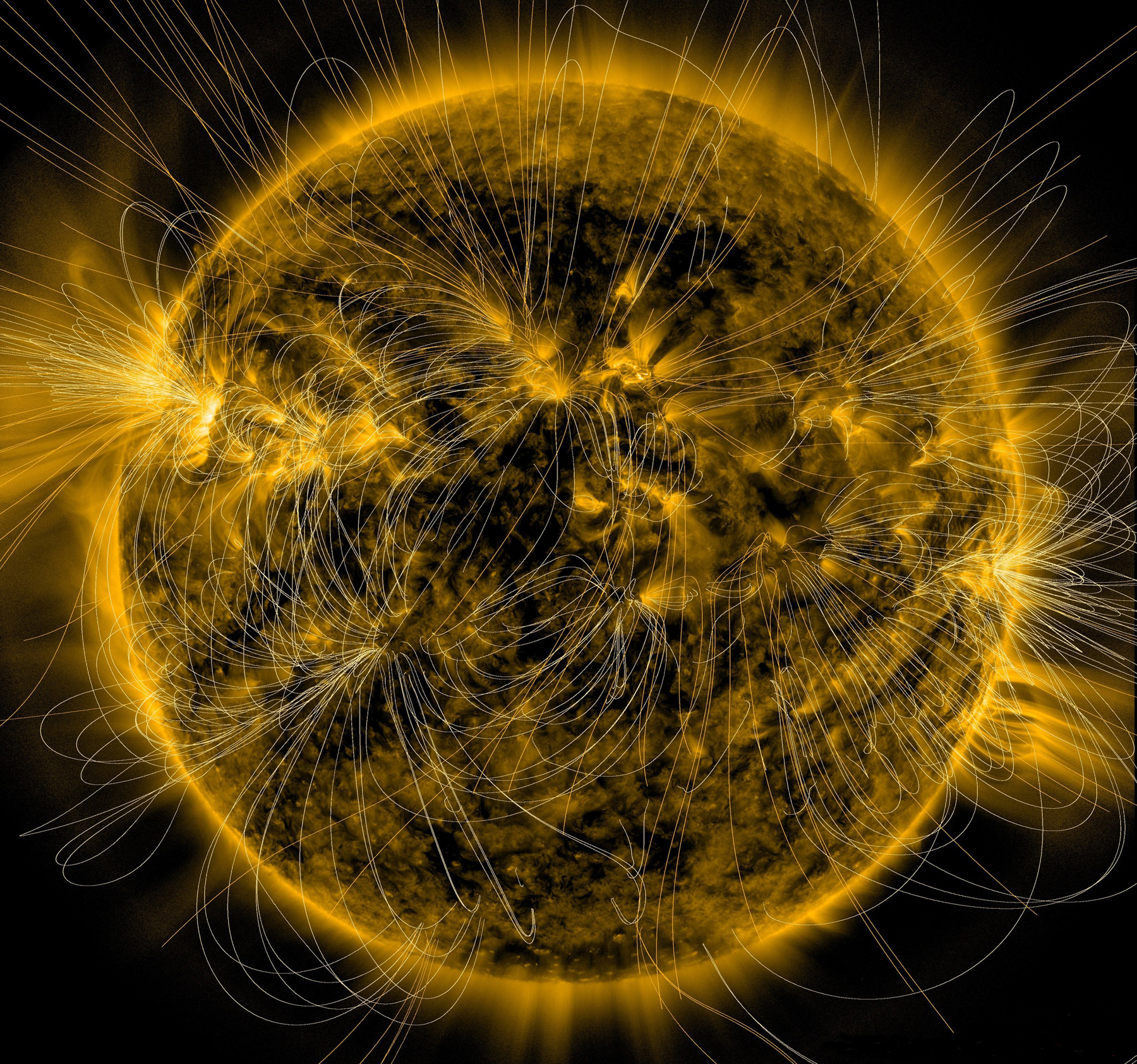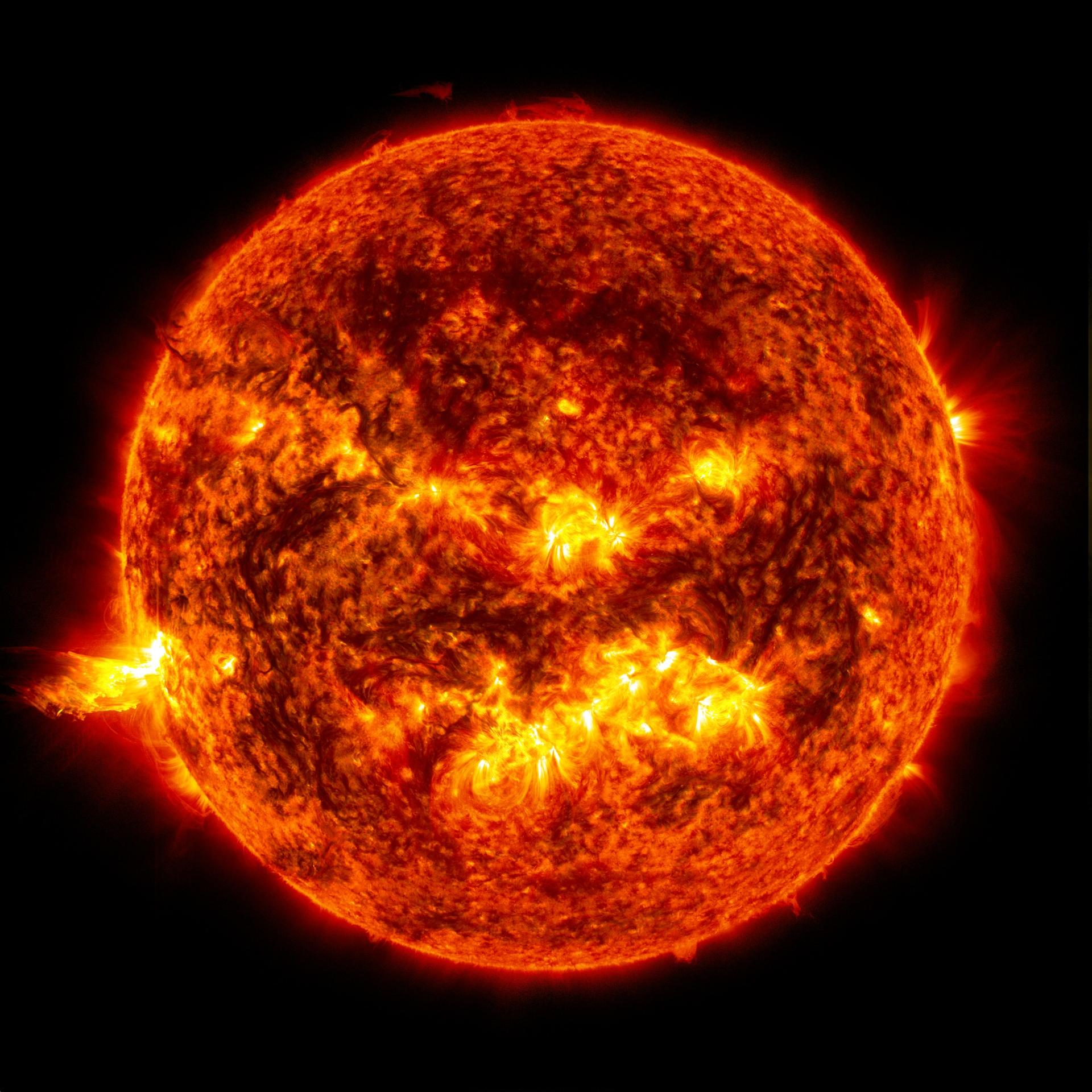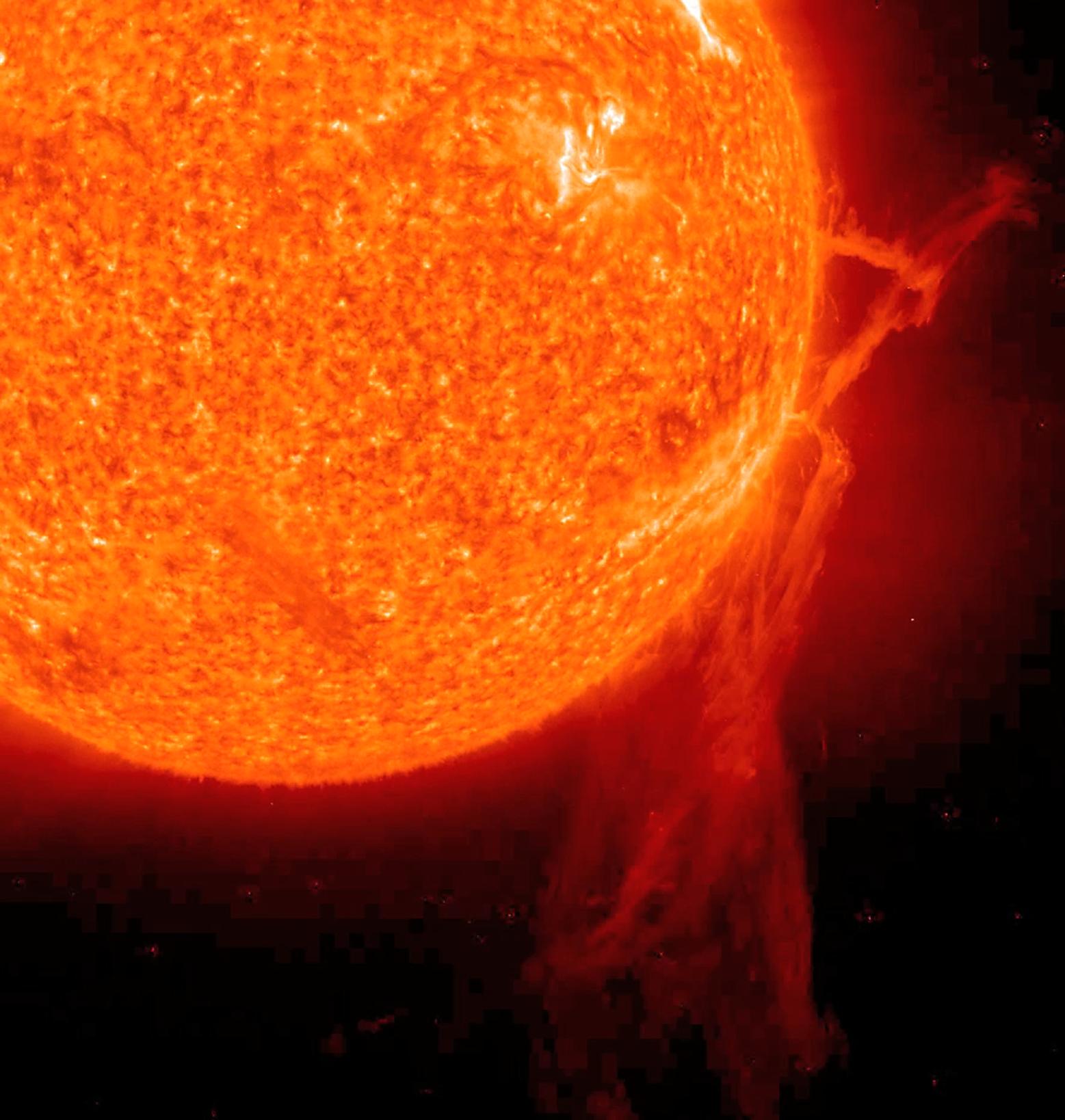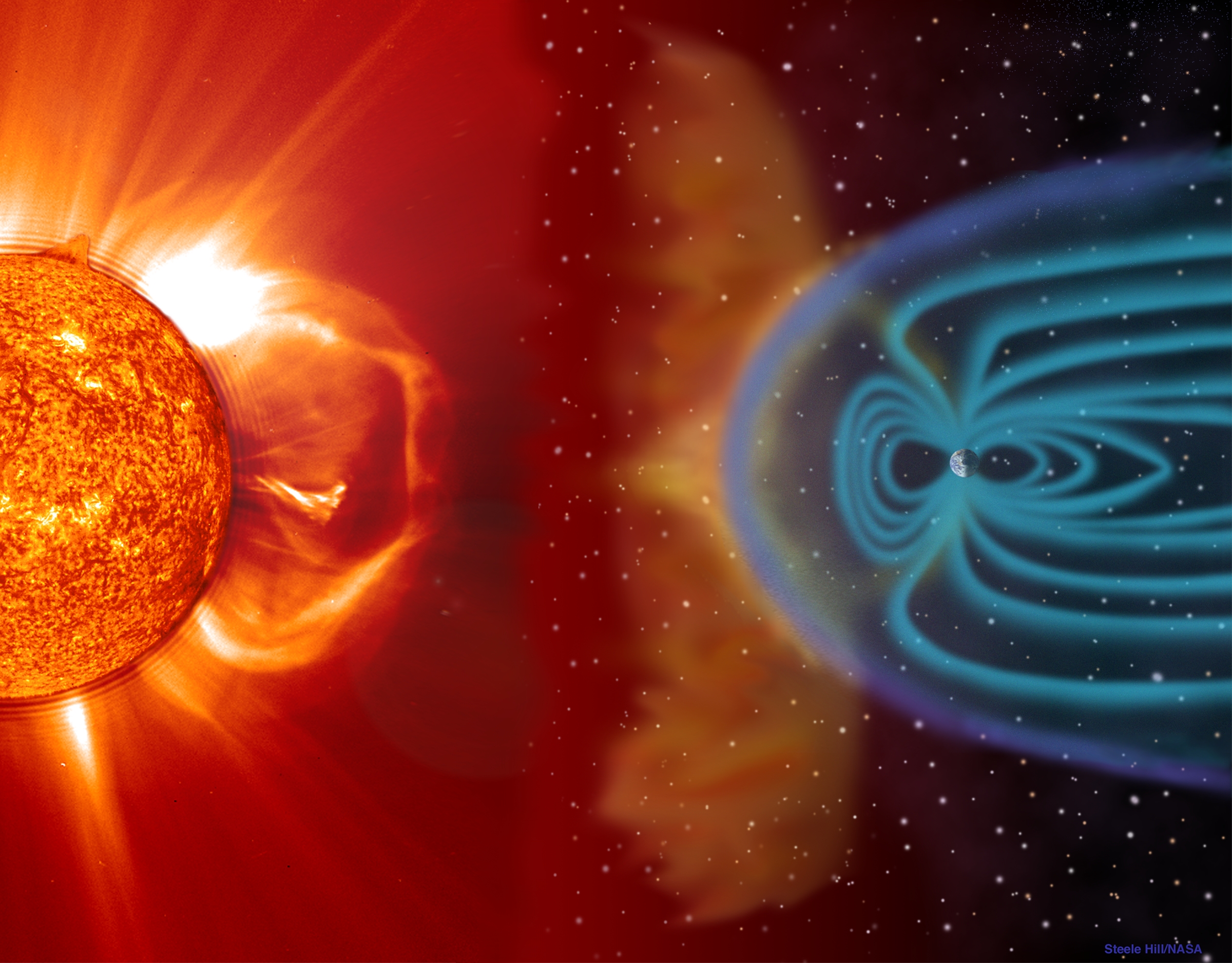Occasionally, dark spots freckle the face of the Sun. These are sunspots, cooler regions on the Sun caused by a concentration of magnetic field lines. Sunspots are the visible component of active regions, areas of intense and complex magnetic fields on the Sun that are the source of solar eruptions. Sunspots can be seen on the Sun’s photosphere, or visible surface of the Sun.
The number of sunspots goes up and down as the Sun goes through its natural 11-year cycle. Scientists use sunspots to help them track this cycle.
Quick Facts
July 2017
A Sunspot Rotates Into View
This video, captured by NASA’s Solar Dynamics Observatory between July 5 to 11, 2017, shows a sunspot moving across the Sun.
Like freckles on the face of the Sun, sunspots appear to be small features, but size is relative: The dark core of this sunspot is actually larger than Earth. Some sunspots are large enough to see without magnification from Earth when wearing protective eyewear, like solar viewing or eclipse glasses.
Credit: NASA
What Are Sunspots?
-
Sunspots Are Caused by the Sun's Magnetic Field
The Sun is made up of plasma, or electrically charged gas. The electrically charged gas can affect magnetic field lines, causing the lines to twist, turn, and tangle up as the plasma moves. These magnetic snarls prevent heat from flowing to the surface, creating darker, cooler regions — the sunspots. They are often around 6,000 degrees Fahrenheit while the rest of the photosphere is around 10,000 degrees Fahrenheit.
-
Sunspot Groups Are Often Associated with Active Regions
Active regions are areas on the Sun where strong magnetic field lines extend into the solar atmosphere. Because of this, scientists often find sunspots in the same area as active regions. Solar eruptions, like solar flares and coronal mass ejections, typically burst from these active regions. Scientists study the regions where activity occurs because those storms can impact spacecraft, astronauts, and infrastructure on Earth.
Image Caption: A view from NASA's Solar Dynamics Observatory of a very large sunspot group in October 2014. Credits: NASA -
Sunspots Help Scientists Track Solar Activity
The total number of sunspots on the Sun varies throughout the solar cycle. As the Sun moves through its natural cycle, in which its activity rises and falls roughly every 11 years, sunspots rise and fall in number, too. NASA and NOAA track sunspots to determine, and predict, the progress of the solar cycle — and ultimately, solar activity. Solar minimum is characterized by a low number of sunspots, while solar maximum is marked by many sunspots. Solar Cycle 25, the 25th solar cycle since scientists started tracking them, began in 2019.
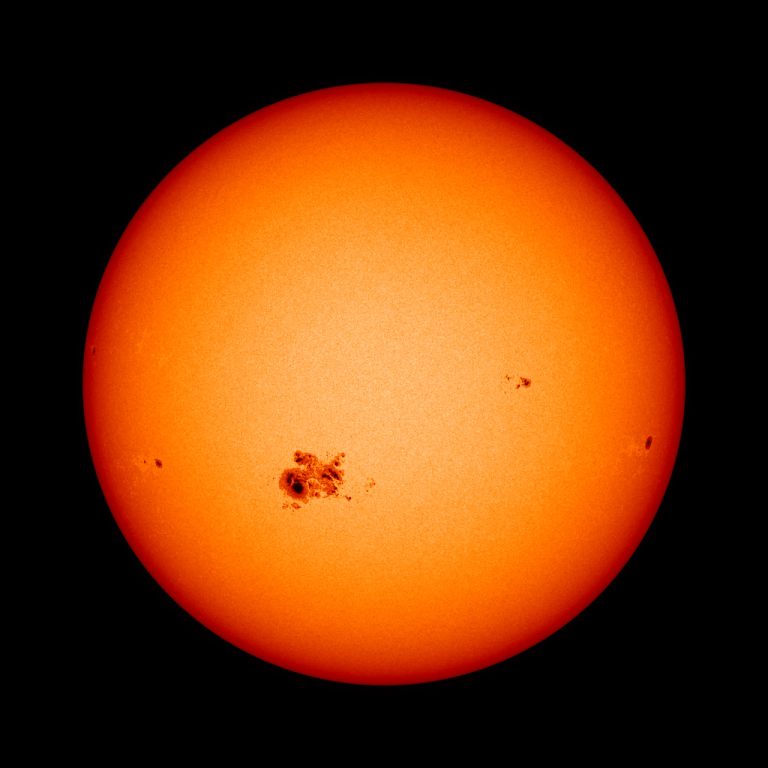
The Solar Cycle As Seen From Space
Roughly every 11 years, at the height of the solar cycle, the Sun’s magnetic poles flip — on Earth, that’d be like the North and South Poles swapping places every decade — and the Sun transitions from sluggish to active and stormy. During this period, known as solar maximum, the Sun blazes with bright flares and other solar eruptions. In this video, our solar telescopes show how the Sun transitions from minimum to maximum during the solar cycle.
Music credit: "Observance" by Andrew Michael Britton [PRS], David Stephen Goldsmith [PRS] from Universal Production Music
Video Credit: NASA's Goddard Space Flight Center
Sunspots & Research
Sunspots Have Been Studied for Centuries
Humans have observed sunspots for more than a thousand years and tracked them in detail since the invention of the telescope four centuries ago. Using mirrors that project an image of the Sun onto a surface, researchers have long sketched the dark spots mottling the face of the Sun every day with pencil and paper.
This daily documentation of the sunspot number is our longest record of solar activity and the longest consistent astronomical observation. Surveying sunspots is the basis of how we track the solar cycle. Even with modern-day spacecraft and solar telescopes that can track sunspots, drawing sunspots remains valuable for maintaining a consistent record. Modern cameras can detect more sunspots than the eye can, which would potentially skew records and imply that there are more sunspots today than centuries ago. Taking the time to draw sunspots allows scientists to more directly compare the current sunspot number record to the records from hundreds of years ago.
NASA Tracks Sunspots Constantly
NASA's Heliophysics fleet of spacecraft are scattered across the solar system to help study the effects of solar activity on Earth and other planets. By studying sunspots, NASA scientists can better understand and prepare for space weather events.
NASA missions like Solar Dynamics Observatory (SDO), Solar Terrestrial Relations Observatory (STEREO), and ESA (European Space Agency) and NASA’s Solar and Heliospheric Observatory (SOHO) take images of the Sun in different wavelengths of light from space. From its close solar orbit, the ESA and NASA Solar Orbiter mission has a unique perspective by capturing images of sunspots at mid-latitudes on the Sun. From the ground, observatories like the National Science Foundation's Daniel K. Inouye Solar Telescope captures magnified images of sunspots. These diverse views help scientists to track the size and number of sunspots as well as the activity associated with them.



























